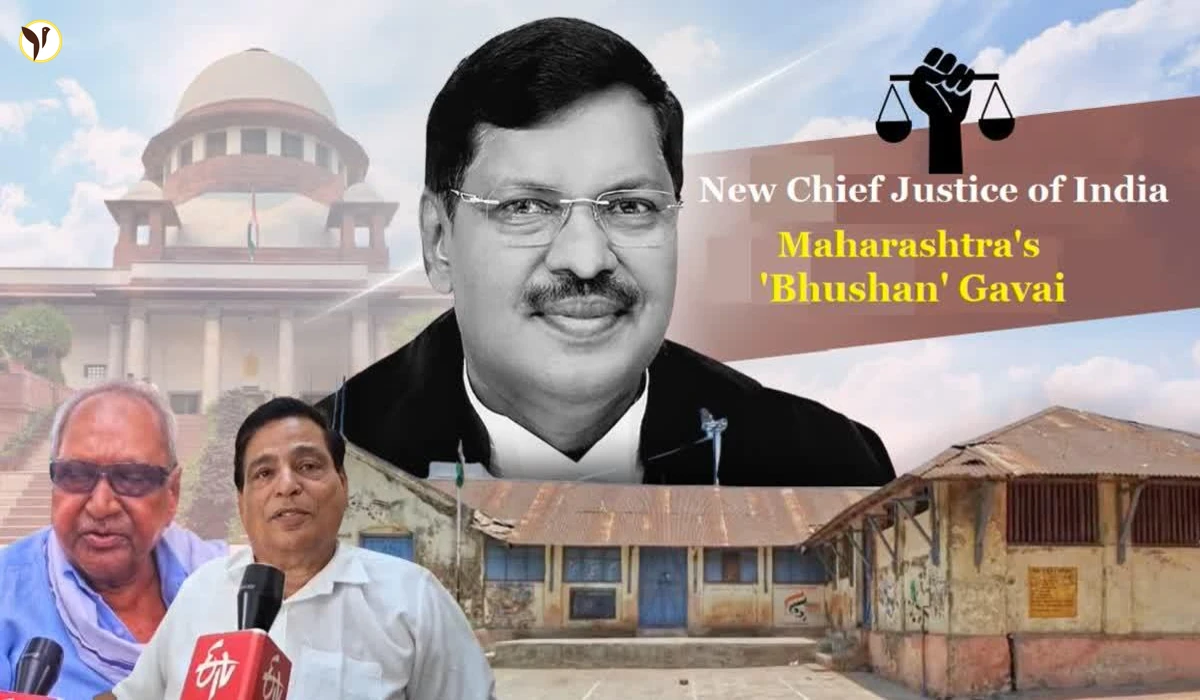A Simple Man, A Giant Leap: The Story of Chief Justice of India BR Gavai
On Wednesday, Justice Bhushan Ramkrishna Gavai made history. He was sworn in as India's 52nd Chief Justice, a momentous occasion not just for him but for the nation. This isn't just a story about a legal giant; it’s a story about a man from humble beginnings who rose to the pinnacle of the Indian judiciary, a testament to perseverance and dedication.
From Village Boy to Chief Justice
Born in a small village in Maharashtra in 1960, Justice Gavai’s childhood was far removed from the grandeur of Rashtrapati Bhavan. His father, the late R S Gavai, a prominent social activist and former governor of several states, dedicated his life to fighting for the rights of Dalits. The family’s modest means—a monthly income of just Rs 67—shaped Justice Gavai’s understanding of the struggles faced by ordinary people.
His uncle, Vasant Rao Gavai, fondly recalled his nephew's childhood. “Bhushan saheb was always a good boy, a simple boy. Even in tough times, like when he was seriously ill, the family supported each other.” These early experiences fostered in him a deep empathy and a commitment to justice. He attended a municipal school, later continuing his education in Mumbai before embarking on his legal career.
- Early Education: Municipal Council Primary School, followed by Gyanmata Vidyalaya.
- Family Life: Shaped by his father's social activism and the family's modest financial situation.
Justice Gavai's journey wasn't without challenges. He joined the bar in 1985 and practiced largely at the Nagpur bench of the Bombay High Court. His elevation to Additional Judge of the Bombay High Court in 2003, and then to permanent Judge two years later, marked significant steps. Finally, in 2019, he achieved the remarkable feat of being appointed as a Supreme Court Judge. Even then, the road to becoming CJI involved many discussions and deliberations, as former Chief Justice NV Ramana recalled, highlighting the fact that Justice Gavai's elevation was a well-deserved recognition of his capabilities and his commitment to inclusive justice.
A Legacy of Landmark Judgments
Justice Gavai’s tenure on the Supreme Court has been marked by a string of significant judgments. He played a key role in high-profile cases, including those related to electoral bonds, demonetization, and the abrogation of Article 370. His strong opinions on important constitutional matters like the creamy layer principle for SCs and STs showcase his commitment to social justice, even if such stances have faced criticism.
His rulings reflect not just legal acumen, but a deep awareness of the social and political context. For example, his strong condemnation of "bulldozer justice" highlighted the importance of due process and the rule of law. His perspective, shaped by his humble beginnings and his family's legacy of social activism, brings a unique dimension to his judgments.
- Notable Cases: Electoral Bonds case, Demonetization case, Article 370 abrogation, and more.
- Social Justice Focus: Strong opinions on issues like the creamy layer principle and bulldozer demolitions.
The First Buddhist Chief Justice
Justice Gavai's elevation is historic, as he is the first Buddhist Chief Justice of India. This underscores the judiciary's increasing inclusivity and reflects the changing face of India. In his interaction with the press before his swearing-in, he emphasized the importance of the Constitution and its role in guiding all branches of government.
Looking Ahead
With a six-month tenure ahead, Justice Gavai inherits a substantial caseload and several critical challenges. He faces the task of clearing a backlog of cases, addressing judicial vacancies, and presiding over politically sensitive matters. Yet, his career clearly demonstrates his dedication to upholding the Constitution, promoting social justice, and ensuring impartial justice for all. His journey is an inspiring reminder that even the highest offices are accessible with hard work, dedication and an unwavering commitment to justice.


/content/stories/thumb/thumb691d721422cca6.84347384.webp)
/content/stories/thumb/thumb691c197dc73887.02401215.webp)
/content/stories/thumb/thumb69182c8560a444.65081693.webp)
/content/stories/thumb/thumb6916d8b4e59a58.94990095.webp)
/content/stories/thumb/thumb6915862559ac79.88543557.webp)


